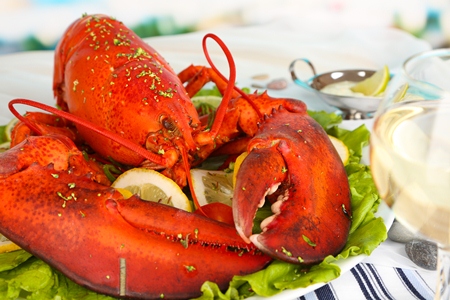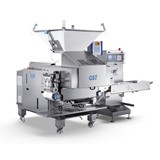The report, Smooth sailing for Australian seafood by agribusiness banking specialist Rabobank, says global consumption of seafood has grown by 26 per cent over the past 15 years, driven by increasing populations and the popularity of seafood in diets.
Seafood is the most consumed animal protein in the world – surpassing other meats including poultry, pork and beef – and consumption is expected to continue to surge, with forecasts suggesting the growth rate is not likely to slow down over the next 10 years.
"Rapid demand growth is outstripping supply, with an estimated 30 to 40 million tonnes of additional seafood required globally to meet consumer demand by 2030," the report finds.
And Australia is in a 'box seat' to take advantage of this growing demand at the high-value premium end of the global market, it says.
Co-authored by Rabobank senior analyst Gorjan Nikolik, a specialist in the global seafood sector, and Australian animal proteins analyst Matt Costello, the report says although the Australian seafood industry accounts for only a small proportion of world seafood production and trade, it plays an important role globally, given the wide range of premium aquaculture and wild-catch products produced in this country.
Australia's seafood sector – which is forecast to have a value of A$2.5 billion in 2014/15 – consists of a diverse range of sectors, including Australian rock lobster, southern bluefin tuna and Tasmanian salmon.
"With one of the strongest reputations globally for producing high-value, world-class, sustainable and environmentally-friendly seafood products, the Australian seafood industry is very well positioned to supply seafood hungry consumers internationally and domestically," Costello said.
Growth in consumption
With global consumption of seafood forecast to average just under 20 kilograms a head annually in 2014, rising consumption of seafood is a world-wide trend, the report says, but particularly pronounced in developing countries, including in Asia.
"Of particular note has been the rapid increase in demand from China, playing a significant role in global consumption and trade flows, while at the same becoming a crucial export destination for Australian seafood," Costello said.
In 2014, Chinese per capita annual consumption of seafood is forecast to reach 37.7 kilograms per head, a rise of 57 per cent since 2000.
"Currently, most of the Chinese seafood consumption is still based on low-value domestically-raised product. But more significant is the expected growth in demand from Chinese consumers for higher-end seafood products, many of which will need to be imported. This is a key opportunity for export-oriented aquaculture and fisheries, such as in Australia, which can supply premium items," Costello said.
Globally, the major consumers of seafood include Korea, Norway and Japan with per capita per annum consumption in 2014 expected to reach 57.7 kilograms, 57.65 kilograms and 52.6 kilograms respectively.
Demand drivers
The Rabobank report says global growth in seafood consumption is being driven by a number of factors.
"Among western consumers there is growing demand due to the perceived health and well-being benefits of fish and other seafood, while there has also been a rapid rise in the popularity of Asian cuisine which is seafood-rich, such as sushi and sashimi," Costello said.
"For developing countries, increased consumption has primarily been driven by population growth, while overall the diverse range of seafood items offers options for different income groups."
Aquaculture V wild-catch
The rise of aquaculture – farmed cultivation of seafood – is also playing a significant role in driving global growth in seafood consumption, the report says, powered by its ability to sustainably and efficiently convert feed to protein and keeping prices affordable.
"The ability to produce more with less is going to be the challenge to the future of food production and the aquaculture sector is the most efficient converter of feed in comparison to all animal proteins," Costello said.
Farmed salmon, for example, requires approximately 1.2 kilograms of feed to produce one kilogram of protein, while an estimated eight kilograms of feed are required to produce one kilogram of beef.
"With wild-catch seafood production growth remaining close to stagnant over the past 15 years, global seafood production is growing through increased aquaculture," Costello said.
"Between 1990 and 2012, wild-catch seafood production increased just eight per cent. And with rising environmental and sustainability pressures coming from all participants along the supply chain – including consumers, companies and governments – it is likely there will be no growth in wild-catch production in the future. Assuming that wild-catch remains at current levels, it is estimated that the extra 30 to 40 million tonnes of additional seafood will be required from aquaculture to meet global demand by 2030."
Globally, aquaculture now accounts for more than 50 per cent of seafood produced for human consumption, surpassing wild-catch in 2012, the report says.
Here in Australia, seafood production is still dominated by wild-catch, accounting for 87 per cent of production in 2012, with aquaculture making up a relatively small, yet increasing, share of production.
- Suppliers
- New to HospitalityHub? Book a Demo
- Advertise with us
- Login
- Email Marketing
- Buyers
- Get Quotes
- Articles & Ideas
- Login
- Subscribe to newsletter
- My Details
- Get Quotes
- Bakery & Dough Processing Equipment
- Bar Equipment & Barware
- Bathroom Fixtures & Accessories
- Chocolate Making Machinery
- Cleaning, Laundry & Housekeeping
- Commercial Coffee Equipment
- Commercial Cooktops
- Commercial Fridges & Freezers
- Commercial Fryers
- Commercial Kitchen Equipment
- Commercial Ovens
- Dish, Utensil & Glass Washing
- Entertainment & Outdoor
- Food Packaging & Ingredients
- Food Preparation Equipment
- Furniture & Fixtures
- Industrial Fans & Ventilation
- Material Handling Equipment
- Pizza & Pasta Making Equipment
- Point of Sale, AV & Technology
- Get Quotes
- Bakery & Dough Processing Equipment
- Bar Equipment & Barware
- Bathroom Fixtures & Accessories
- Chocolate Making Machinery
- Cleaning, Laundry & Housekeeping
- Commercial Coffee Equipment
- Commercial Cooktops
- Commercial Fridges & Freezers
- Commercial Fryers
- Commercial Kitchen Equipment
- Commercial Ovens
- Dish, Utensil & Glass Washing
- Entertainment & Outdoor
- Food Packaging & Ingredients
- Food Preparation Equipment
- Furniture & Fixtures
- Industrial Fans & Ventilation
- Material Handling Equipment
- Pizza & Pasta Making Equipment
- Point of Sale, AV & Technology
Trusted by 220,000 Australian hospitality buyers
Buyers
- Discover products & solutions
- Login
- Subscribe To Newsletter
- Browse All Products
- Read Articles
Suppliers
Advertise
- Promote your products & solutions
- New to HospitalityHub? Book a Demo
- Login / Forgot Password
- Advertise Your Products
- Success Stories
- Email Marketing
Trusted by 220,000 Australian hospitality buyers





-160x160-state_article-rel-cat.png)




